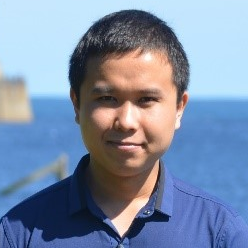Wireless Electric Vehicle Charging
A special issue of Vehicles (ISSN 2624-8921).
Deadline for manuscript submissions: closed (25 August 2023) | Viewed by 5374
Special Issue Editors
Interests: wireless power tranfer; inductive power transmission; electric vehicles; microgrids; energy storage
Interests: wireless power transfer; electric vehicles; smart grids; sensor networks
Special Issues, Collections and Topics in MDPI journals
Special Issue Information
Dear Colleagues,
Electric vehicles have experienced exponential growth in recent years. Part of this growth is based on the evolution of technology, cost reduction and the possibility of using renewable energy. However, one of the main limitations for the growth of these vehicles is found in their autonomy and in the charging infrastructure, which means that users do not adopt these vehicles compared to those with internal combustion.
Wireless charging is part of the solution to this problem. This technology not only provides greater security to the process thanks to the non-intervention of users, but also facilitates it by automating it and including new possibilities such as dynamic charging.
For this Special Issue of Vehicles entitled “Wireless Electric Vehicle Charging”, we are encouraging research in the field of wireless charging. Topics include, but are not limited to, magnetic resonant wireless charging, capacitive wireless charging, new topologies, efficiency improvement, control algorithms, guidance and alignment systems and Vehicle to Grid (V2G).
Dr. José González-González
Prof. Dr. Alicia Triviño-Cabrera
Dr. Binh Vu
Guest Editors
Manuscript Submission Information
Manuscripts should be submitted online at www.mdpi.com by registering and logging in to this website. Once you are registered, click here to go to the submission form. Manuscripts can be submitted until the deadline. All submissions that pass pre-check are peer-reviewed. Accepted papers will be published continuously in the journal (as soon as accepted) and will be listed together on the special issue website. Research articles, review articles as well as short communications are invited. For planned papers, a title and short abstract (about 100 words) can be sent to the Editorial Office for announcement on this website.
Submitted manuscripts should not have been published previously, nor be under consideration for publication elsewhere (except conference proceedings papers). All manuscripts are thoroughly refereed through a single-blind peer-review process. A guide for authors and other relevant information for submission of manuscripts is available on the Instructions for Authors page. Vehicles is an international peer-reviewed open access quarterly journal published by MDPI.
Please visit the Instructions for Authors page before submitting a manuscript. The Article Processing Charge (APC) for publication in this open access journal is 1600 CHF (Swiss Francs). Submitted papers should be well formatted and use good English. Authors may use MDPI's English editing service prior to publication or during author revisions.
Keywords
- magnetic resonance wireless charging
- inductive charging
- electric vehicles
- capacitive wireless charging
- vehicle to grid
- compensation topologies
- dynamic wireless charging
- coil design







